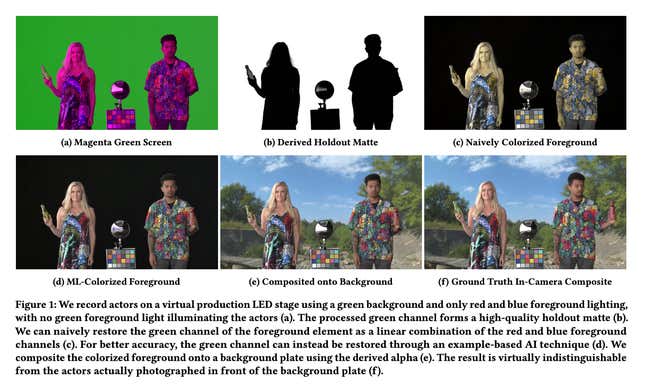
Netflix researchers have pioneered a visual effects method that could be an improvement to the traditional green screen, and it just requires one extra color: magenta. A study published on arXiv.org dubs the new method “Magenta Green Screen.”
The technique requires the subjects to be bathed in red and blue LED lights, creating the color magenta, while standing in front of a traditional green screen. Digital cameras, which interpret light in red, blue, and green values, can then split the actors and screen into separate channels: the magenta channel (foreground) and green channel (background).
AI can then reference photos of the actors in natural lighting to eliminate the magenta hue. Researchers say that the technique makes it easier to composite, or layer, visual elements. It can even pick up on tricky details like strands of hair and transparent objects.

Watch: A closer look at how the Magenta Green Screen works
Netflix’s new green screen technique is still a work in progress
One issue with the technique is that actors would need to perform in lighting that can best be described as evoking neon beet juice—a less-than-ideal environment. The study’s authors propose that “time-multiplexing” the magenta light, basically turning it on and off rapidly, could allow filming to take place under “mostly normal lighting.”
The AI used in the study required training data in order to restore natural colors to the footage, adding an extra layer of complexity. Also, the process doesn’t work in real time. Still, Netflix’s method provides a 21st century take on a century-old cinematic technique, and has potential to create even more stunning visual effects.
Related stories
🟩 Quartz Obsession: Green Screens
🤩 Artificial intelligence means anyone can cast Hollywood stars in their own films